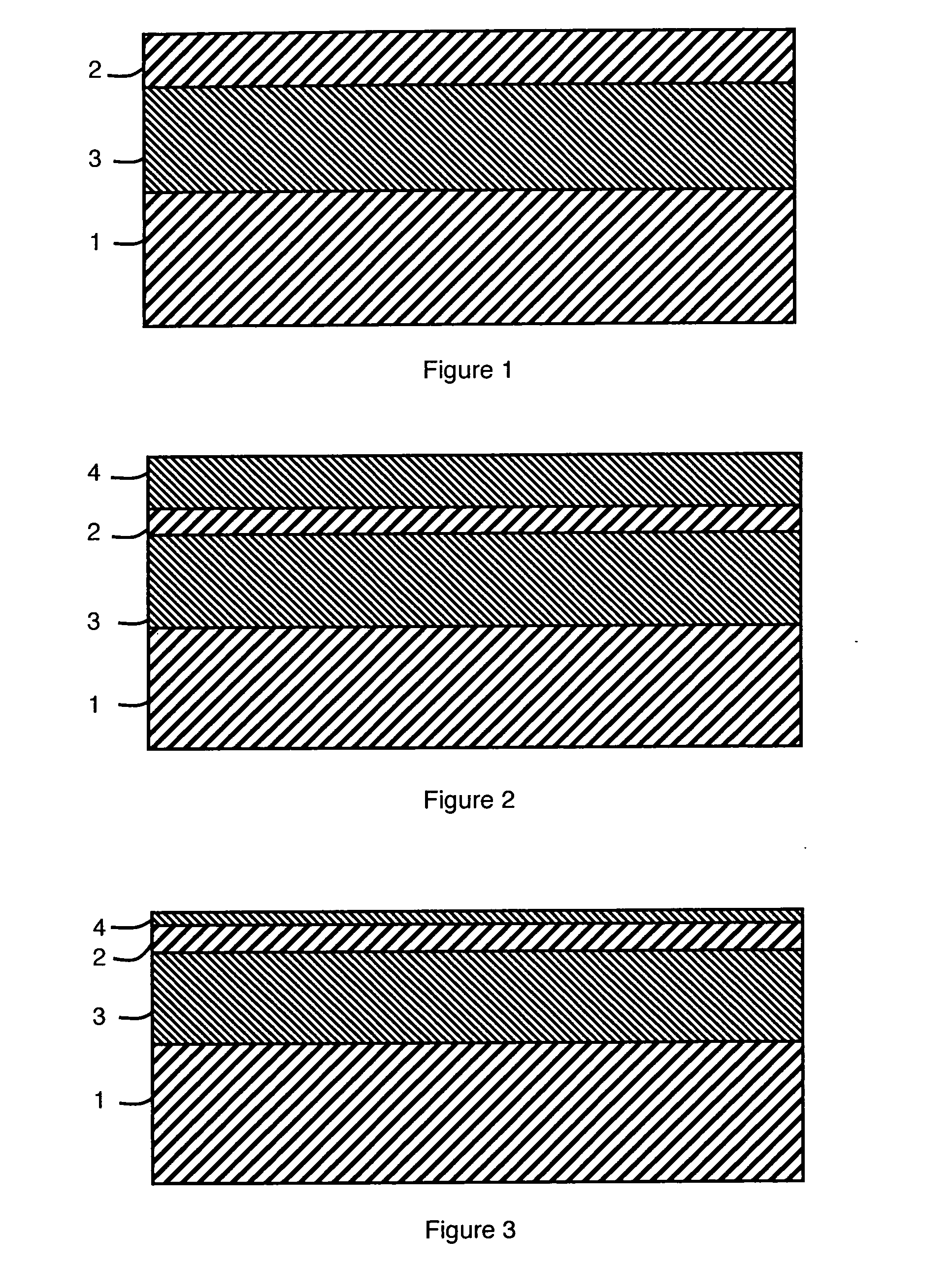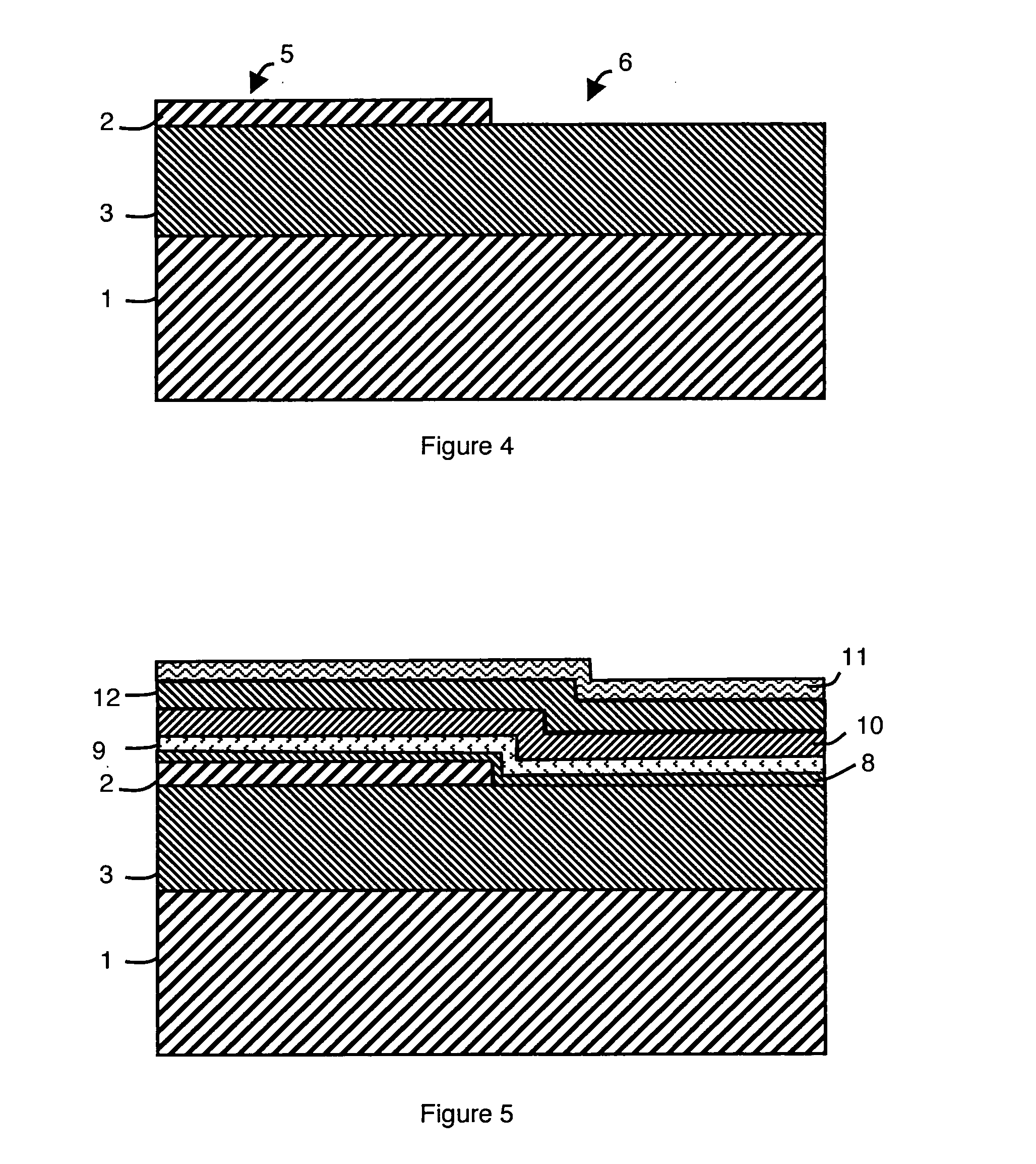Process for Fabricating a Field-Effect Transistor with Self-Aligned Gates
a field-effect transistor and gate technology, applied in semiconductor/solid-state device manufacturing, electrical equipment, solid-state devices, etc., can solve the problems of obstructing the future drain-channel or source-channel contact area, affecting the selective etching of bulk silicon blocks of the first substrate with stopping on a non-doped polysilicon layer,
- Summary
- Abstract
- Description
- Claims
- Application Information
AI Technical Summary
Benefits of technology
Problems solved by technology
Method used
Image
Examples
Embodiment Construction
[0039]As represented in FIG. 1, fabrication of the field-effect transistor in conventional manner uses a base substrate constituted by forming a film 2 of conductor material on a buried insulator 3 on a first substrate 1 constituting a mechanical support substrate. First substrate 1 is for example made from bulk silicon and film 2 is formed by a thin layer (for example with a thickness of 50 to 200 nm) of silicon, germanium or SiGe so as to form a silicon on insulator (SOI), germanium on insulator (GeOI), or SiGe on insulator (SiGeOI) base substrate. Buried insulator 3 is for example formed by a buried oxide layer with a thickness of 100 to 400 nm. This base substrate which is available on the market is not necessarily produced at the same time as fabrication of the transistor.
[0040]Film 2 is then preferably thinned, conventionally by oxidation (formation of an oxide layer 4, as represented in FIG. 2) and de-oxidation (as represented in FIG. 3). For gate lengths of less than 20 nm, ...
PUM
 Login to View More
Login to View More Abstract
Description
Claims
Application Information
 Login to View More
Login to View More - R&D
- Intellectual Property
- Life Sciences
- Materials
- Tech Scout
- Unparalleled Data Quality
- Higher Quality Content
- 60% Fewer Hallucinations
Browse by: Latest US Patents, China's latest patents, Technical Efficacy Thesaurus, Application Domain, Technology Topic, Popular Technical Reports.
© 2025 PatSnap. All rights reserved.Legal|Privacy policy|Modern Slavery Act Transparency Statement|Sitemap|About US| Contact US: help@patsnap.com



